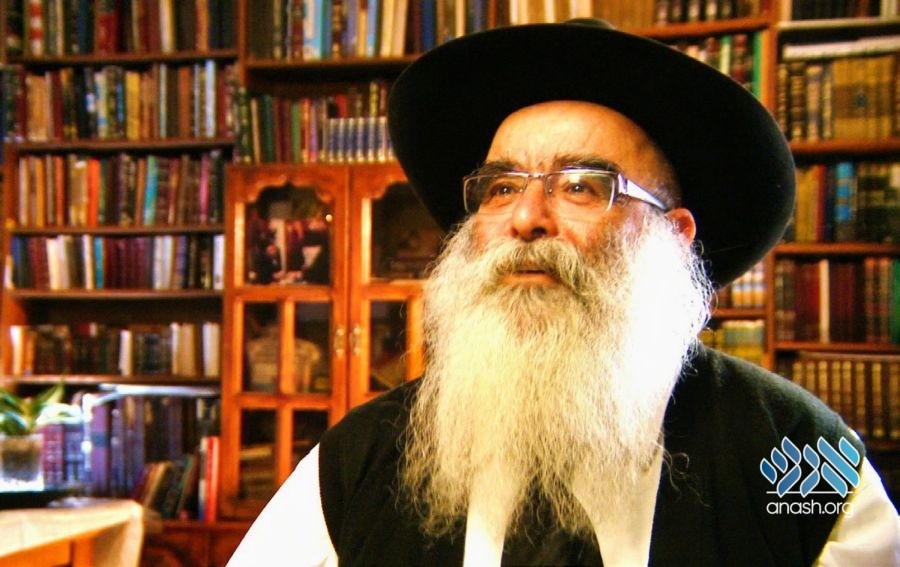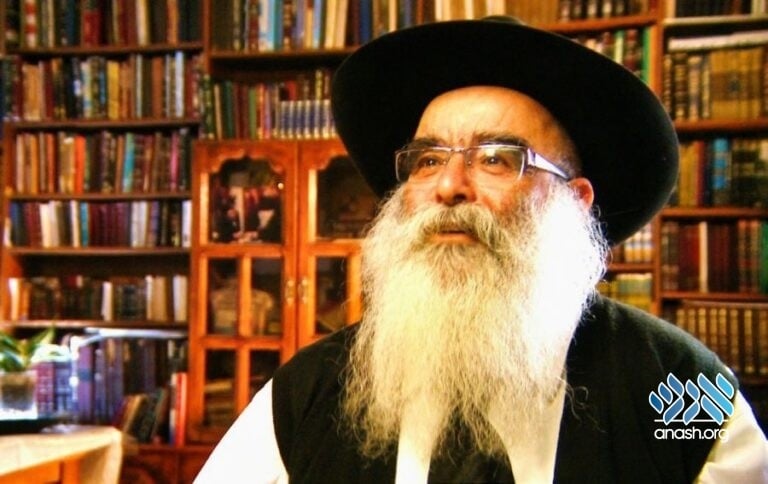כ״א תשרי ה׳תשפ״ה | October 22, 2024
The Rabbi and the Rich Man
During the year he spent learning in 770, Rabbi Amram Malka served as an assistant in the Rebbe’s home. He fondly recalls fascinating anecdotes of his interactions with the Rebbe and the Rebbetzin.

During the year he spent learning in 770, Rabbi Amram Malka served as an assistant in the Rebbe’s home. He fondly recalls fascinating anecdotes of his interactions with the Rebbe and the Rebbetzin.
Today one of the senior members of the Chabad community in Rishon Litziyon, Israel, Rabbi Amram Malka served as an assistant in the Rebbe’s home during the year he spent studying in 770. He was interviewed in his home in February of 2012.
We came to Israel from Casablanca when I was five, and for the first seven years, we lived in a migrant camp in Pardes Chana. My twin brother Eliyahu Moshe and I studied in a government school, but when our parents realized how far it was from traditional Judaism, they moved to Bnei Brak, where we received a proper Torah education. When we graduated from the school in Bnei Brak, they sent us to the Chabad yeshivah in Lod and then to Kfar Chabad.
In those yeshivot, the children of Yemenite and Moroccan families learned alongside the sons of old-stock Russian Chabad families. And so did we discover the world of Chabad, imbibe its spirit, and eventually adopt its way of life as devoted chasidim of the Rebbe. That is why it was only natural that I joined a group of students who were going to study in New York, in the Rebbe’s court – a program known today as “kvutzah.”
When we arrived in 1965, I was thrilled to be the first member of the Malka family to ever visit the Rebbe. A few weeks later, after Rosh Hashanah, a friend of mine asked me whether I could help build the Rebbe’s sukkah. “But no looking around, and no questions,” he warned me. Of course, I agreed, while wondering to myself how I – a simple, wide-eyed yeshivah student – had landed the privilege of working for the Lubavitcher Rebbe.
First, we carried sukkah walls from the basement of 770 up to the second floor, which was where the Previous Rebbe had lived. There I met the Previous Rebbe’s wife, Rebbetzin Nechama Dina, for the first time. Until her passing in 1971, her son-in-law and her husband’s successor, the Rebbe, used to have meals during festivals in this apartment, and there, on the balcony, we built the sukkah that would host them.
Next, we built a sukkah at the Rebbe’s home on President Street – which was another first for me. The Rebbe’s wife, Rebbetzin Chaya Mushka, opened the door for us when we came, and after we finished working, she brought out some fruit and other treats. “You worked hard,” she explained, and encouraged us to partake.
Later, one of the Rebbe’s secretaries handed me an envelope with twenty-five dollars.
“This is from the Rebbetzin,” he said. She didn’t want me to work for free.
Now that I knew the protocol, on Simchas Torah, I was once again called to the Previous Rebbe’s apartment to help set up some tables, and I kept being invited back to do various jobs for the Rebbe and his family.
That Passover, I helped out with the pre-holiday cleaning, and then again I helped serve and clear at the Seder. This meant that I also had the honor of sitting at the Rebbe’s Seder table, alongside several venerable Chabad chasidim. Rebbetzin Nechama Dina instructed me to put a full setting at the head of the table, for her late husband, the Previous Rebbe. Of course, nobody sat there, and the Previous Rebbe’s two sons-in-law, the Rebbe and Rabbi Shmaryahu Gurary, sat on either side. The Rebbe made a point of saying “thank you” every time I served him, and then again when I removed his plate. Of course, we served the Rebbe first, but he would not touch his food until he saw that everybody – including us waiters – had a portion.
I couldn’t always follow the discussions in Yiddish taking place on the other end of the table – but I was enchanted by the atmosphere in that room all the same.
On Shavuot, once again, I was asked to help during the holiday meal, but this time I reluctantly declined. The Rebbe wanted chasidim to go out and visit synagogues outside of Crown Heights on the first night of the holiday in order to bring extra holiday joy to other communities and share chasidic teachings. So even though it meant missing the meal, I wanted to go on “tahalucha,” as this program is called.
When I made it back to 770 later that night, I hadn’t yet prayed or eaten. But suddenly, I got word that the Rebbe had summoned me; apparently, he had noticed my absence at the meal.
By then, the stairs leading up the second floor of 770 were packed with chasidim who had come back from tahalucha and were waiting for the Rebbe to come out and greet them. And so, with no other way in, I was hoisted up and passed over the crowd until I was standing right behind the Rebbe.
“Have you prayed yet?” he asked me, implying that if I had prayed already I was invited to join the meal at his table! I told him that I had not, but before he left, he checked again to see if I was ready to have the meal. I was struck by the fatherly care and sensitivity that the Rebbe showed me; I was just a young boy who helped around the house!
That summer, Zalman Shazar, then the President of Israel, paid the Rebbe an official state visit. Before he arrived, the Rebbe’s secretary, Rabbi Leibel Groner, asked me to help prepare the Rebbe’s office. Together with a few other boys, we got to work packing up and clearing the mounds of books the Rebbe had either received as gifts or had been studying from. Then, handing me a few rags for the walls and windows, Rabbi Groner asked me to stay on for a little longer to put on the finishing touches.
At one point, I noticed a stack of pictures sticking out of a half-open drawer in the Rebbe’s desk. When I got a closer look, I saw that it was a family photo of people that I recognized. “They must have sent this picture of themselves to the Rebbe,” I thought to myself. “I also want to send the Rebbe a picture of my own family.”
I wrote to my parents, and they soon sent me a picture of the entire Malka family which I put into a beautiful frame. Before I returned home, I had a private audience with the Rebbe. When I came into his room, along with my letter, I also presented the framed picture in an envelope, with a little dedication and the names of my family members on the back.
The Rebbe read my letter, gave me a blessing, and then opened the envelope. After studying the picture for a moment, he took the photo out of the frame and laid it on the table. Then, still holding the empty frame, the Rebbe said:
“When people would bring their bikurim, the offering of the First Fruits, to the Temple, the Mishna says that the wealthy would bring their offerings in gold and silver containers, while the poor brought theirs in wicker baskets. The wicker baskets were given to the priests along with the fruit, while the expensive containers were returned to their owners.”
Then, handing me the frame, he added, “I’ve taken your picture, but, like they did with the wealthy people, I’m giving the frame back to you.” When the Rebbe returned that frame to me, he truly made me feel rich.



We appreciate your feedback. If you have any additional information to contribute to this article, it will be added below.